Refund Resale

Is there a difference in the tax refund process between goods for personal use and commercial resale ?
The tax refund process for goods varies based on whether they are purchased for personal use or commercial resale. Personal use items may qualify for tax-free shopping, deductions as expenses, or retail returns. Commercial resale goods often benefit from sales tax exemptions, input tax credits, export refunds, and inventory write-offs. The key differences include sales tax treatment, deduction eligibility, refund mechanisms, and documentation requirements.

Is there a minimum purchase amount to qualify for a tax refund ?
The minimum purchase amount for tax refunds varies by country and product type. Other requirements include timeline, product type, receipts, and departure within a specific time frame. To claim a refund, save receipts, fill out forms, visit a customs office, submit documentation, and wait for the refund to be processed.

What is a tax refund for shopping ?
The article provides a comprehensive guide on what a tax refund for shopping is, how it works, its benefits, and tips for successful claims. It explains that a tax refund for shopping allows tourists to reclaim some of the Value Added Tax (VAT) they have paid on purchases made during their trip abroad. The process involves keeping receipts, meeting minimum purchase amounts, obtaining tax-free forms, customs declaration, and claiming refunds. The article also highlights the benefits of tax refunds, including savings, additional discounts, and convenience, and offers tips for successful claims such as planning ahead, organizing documents, allowing enough time, and double-checking amounts.

How does the tax refund process work in Europe ?
The Tax Refund Process in Europe is a guide for tourists on how to get a Value Added Tax (VAT) refund when shopping in the European Union. The VAT rate varies by country and ranges from approximately 15% to 27%. To be eligible for a VAT refund, you must be a non-EU resident, goods must be for personal use, purchases must be taken out of the EU within three months of the issue date on the receipt, and there is usually a minimum purchase amount per store to qualify for a refund. The steps involved in getting a VAT refund include making the purchase, obtaining the VAT refund form, validation at the point of departure, submitting the form, and receiving your refund. Additional tips include keeping all original receipts and forms until you have received your refund, being aware of processing fees, and using direct VAT refund services offered by some stores.

Can I claim a tax refund on online purchases when traveling abroad ?
Can I Claim a Tax Refund on Online Purchases When Traveling Abroad? When traveling abroad, it is possible to claim a tax refund on certain online purchases. However, the process and requirements can vary depending on the country you are visiting and the specific policies of the retailer or e-commerce platform. In this article, we will explore the different factors that can impact your ability to claim a tax refund on online purchases when traveling abroad. Key Factors to Consider: 1. Country-Specific Policies 2. Retailer or E-Commerce Platform Policies 3. Product Type 4. Purchase Amount 5. Timeline Steps to Claim a Tax Refund on Online Purchases: 1. Research Tax Refund Policies 2. Check Product Eligibility 3. Meet Minimum Purchase Requirements 4. Save Receipts and Documentation 5. Fill Out Tax Refund Forms 6. Submit Documentation and Receive Refund
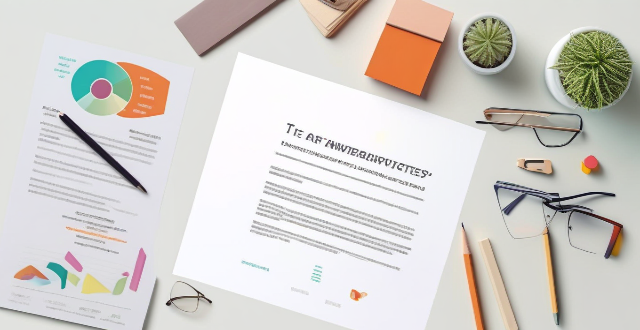
Are there any advantages to using a tax refund service company instead of doing it myself ?
Using a tax refund service company offers several advantages, including time-saving, accuracy, expertise, convenience, and peace of mind. These services can help maximize refunds or minimize tax liability by ensuring accurate tax preparation and staying up-to-date with changing tax laws and regulations.

How can I calculate the estimated tax refund for my purchases ?
To calculate an estimated tax refund for purchases, followTo calculate an estimated tax refund for purchases, follow sales tax rate, calculate the and subtract any applicable tax credits or deductions from the total sales tax paid to estimate the refund. Consult a tax professional for accurate information.

What documents are required to apply for a shopping tax refund ?
The text is a topic summary for "Required Documents for Shopping Tax Refund Application." It lists the necessary documents needed to apply for a tax refund, including a passport or travel document, receipts and invoices, a tax-free form, credit card or bank statement, boarding pass or flight itinerary, customs declaration form, and shipping documents (if applicable). The text also mentions that once all the required documents are gathered, the tax refund application can be made at the airport or through the designated tax refund office in the city where purchases were made.

Can I get a refund for an app I purchased on the App Store ?
You can request a refund for an app you purchased on the App Store, but there are certain conditions that must be met in order to qualify. You have 14 days from the date of purchase to request a refund, and the app must not have been downloaded or launched more than twice. You must also provide a valid reason for your request. To request a refund, open the App Store app on your device, tap on your profile picture in the top right corner, select "Purchase History" from the drop-down menu, find the app for which you want to request a refund and tap on it, tap on "Report" next to the app, and follow the prompts to submit your refund request. Be honest and clear about why you are requesting a refund, provide any relevant information or screenshots that support your request, and keep track of your purchase history to make sure you meet the eligibility criteria before submitting your request.

Can I still get a tax refund if I have a connecting flight within the EU ?
To obtain a tax refund when you have a connecting flight within the EU, follow these steps: purchase goods in a participating store, complete the tax-free shopping form, obtain a customs stamp, and claim your tax refund. Having a connecting flight does not affect your ability to get a tax refund.

Can I get a tax refund if I'm not a resident of the country where I shopped ?
Non-residents can claim tax refunds for purchases made abroad, but must meet certain criteria and follow specific procedures. Eligibility usually requires buying goods for personal use and taking them out of the country within a set time frame. Documentation such as receipts and invoices is crucial for proving eligibility. Tax refund forms can be obtained from stores or airports and must be completed with personal and purchase details. Customs officials stamp these documents to verify export of the items. Submission of stamped documents to the appropriate authority initiates the refund process, which may result in direct deposit or mailed refunds. Successful tax refund claims depend on adhering to these steps and retaining all necessary paperwork.

How long does it typically take to receive a tax refund after leaving a country ?
Leaving a country can be a stressful process, and one of the concerns that many expatriates have is how long it will take to receive their tax refund. The answer to this question depends on several factors, including the country you are leaving, your residency status, the method of application, and the time of year. By following best practices such as filing electronically, providing complete information, following up with tax authorities, and considering professional help, you can help speed up the process and receive your refund more quickly.
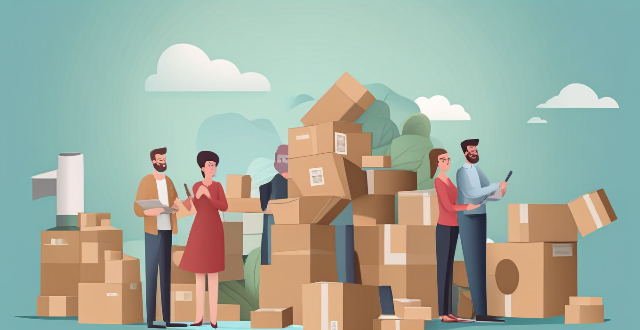
What are the benefits of buying second-hand goods instead of new ones ?
The benefits of buying second-hand goods instead of new ones include reduced waste, conservation of resources, cost savings, resale value, supporting local economies, and promoting sustainable consumption. Buying used items helps reduce the amount of waste generated, conserves natural resources, saves money, retains high resale value, supports small businesses, and encourages a more responsible approach to shopping.

What do I need to know about VAT refunds when traveling internationally ?
VAT (Value Added Tax) is a consumption tax applied on products or services purchased within a country. International travelers may be eligible for a VAT refund if they purchase goods to take out of the country where they made the purchase, often referred to as "tax-free shopping". To get a VAT refund, travelers must check eligibility, get tax-free forms, keep receipts, procure documents from customs, claim their refund, and be aware of time limits, minimum purchase amounts, fees, and currency conversion. Tips for successful VAT refunds include planning ahead, consolidating purchases, tracking deadlines, verifying retailer participation, and consulting with experts. By understanding the VAT system and following these guidelines, international travelers can potentially save money on their shopping experiences.
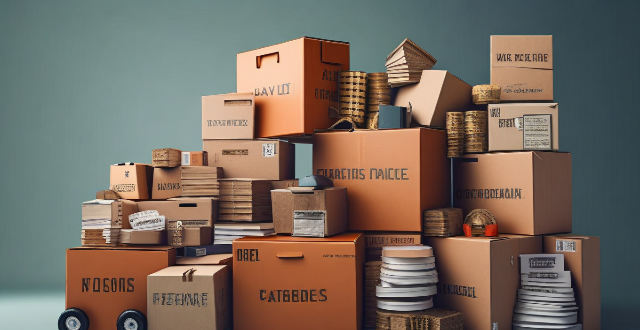
Are the items in a sample sale returnable or exchangeable ?
Sample sales can have various return and exchange policies. Some items are final sale, while others may have limited return periods or require the item to be in original condition for returns. Some retailers offer only store credit instead of refunds, and others allow exchanges but no refunds. It's important to know the specific policies before purchasing to avoid disappointment later on.

Are electric cars more expensive than gasoline cars ?
Electric cars, also known as EVs, have been gaining popularity due to their eco-friendly nature and lower operating costs. However, the initial purchase price of an electric car is often higher than that of a traditional gasoline-powered car. In this article, we will explore the cost differences between electric and gasoline cars. ## Upfront Cost **Electric Cars:** - Higher upfront cost due to expensive battery technology and limited production scale. - Prices vary depending on the model, brand, and range. - Some governments offer incentives and tax credits to offset the high initial cost. **Gasoline Cars:** - Generally less expensive upfront compared to electric cars. - Wide variety of models and brands available at different price points. - No government incentives or tax credits for purchasing a gasoline car. ## Operating Costs **Electric Cars:** - Lower operating costs due to cheaper electricity rates compared to gasoline prices. - Maintenance costs are generally lower since there are fewer moving parts in an electric motor. - Battery replacement can be costly, but it is not expected until after several years of use. **Gasoline Cars:** - Higher operating costs due to fluctuating gasoline prices and regular maintenance requirements. - More frequent oil changes, tune-ups, and other routine maintenance tasks. - Fuel efficiency varies widely among gasoline cars, affecting overall operating costs. ## Depreciation **Electric Cars:** - Depreciation rate may be higher for electric cars due to rapid advancements in technology and changing consumer preferences. - Some early adopters may experience significant depreciation if they choose to sell their electric car before its battery lifespan ends. **Gasoline Cars:** - Generally slower depreciation rate compared to electric cars. - Well-maintained gasoline cars can retain their value for longer periods. ## Resale Value **Electric Cars:** - Resale value depends on factors such as battery health, range, and charging infrastructure availability. - As more people switch to electric cars, the demand for used electric vehicles may increase, potentially boosting resale values. **Gasoline Cars:** - Resale value is typically more predictable and stable compared to electric cars. - Factors such as fuel efficiency, brand reputation, and vehicle condition affect resale value. In conclusion, while electric cars may have a higher upfront cost, they offer lower operating costs and potentially better resale value in the future. It's essential for consumers to consider both short-term and long-term costs when deciding between an electric or gasoline car.

Are all hybrid cars made equal or are some brands better than others ?
Hybrid cars vary in performance, reliability, and value across different brands. Brand A leads in engine efficiency, driving experience, acceleration, durability, maintenance costs, warranty, cost of ownership, resale value, and innovation. Brand B performs moderately well but lags behind Brand A in several areas. Brand C has the lowest ratings for most criteria, including durability, maintenance costs, warranty, cost of ownership, resale value, and innovation. Consumers should consider these factors when choosing a hybrid car to ensure they get the best value for their money.
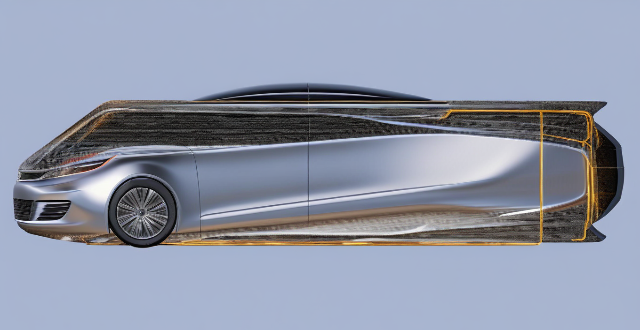
Are there any disadvantages to owning a hybrid car ?
Owning a hybrid car comes with several disadvantages, including higher cost compared to traditional gasoline-powered vehicles, limited power output, battery lifespan concerns, reliability issues, and potentially lower resale values.

How much more expensive is a gasoline hybrid car compared to a regular gasoline car ?
The cost difference between a gasoline hybrid car and a regular gasoline car can vary depending on several factors such as brand, model, features, and location. However, in general, gasoline hybrid cars tend to be more expensive than regular gasoline cars. Here are some key points to consider: - Gasoline Hybrid Cars: These vehicles typically have a higher initial cost compared to regular gasoline cars due to the additional technology required for the hybrid system. The price difference can range from a few thousand dollars to over $10,000, depending on the make and model. One of the main advantages of gasoline hybrid cars is their improved fuel efficiency. They use both gasoline and electricity to power the engine, which results in better mileage and lower fuel costs over time. While gasoline hybrid cars may have higher repair costs due to their complex systems, they often require less maintenance overall because the electric motor helps reduce wear and tear on the engine. As awareness of environmental issues grows, so does the demand for eco-friendly vehicles like gasoline hybrid cars. This increased demand can help maintain or even increase their resale value over time. - Regular Gasoline Cars: These vehicles are generally less expensive upfront as they do not require the same advanced technology as hybrid cars. These vehicles rely solely on gasoline for power, which can lead to higher fuel consumption and expenses, especially if you drive long distances or frequently idle in traffic. These vehicles may have lower repair costs initially but may require more frequent maintenance, such as oil changes and tune-ups, due to their reliance on a single power source. The resale value of regular gasoline cars may decline faster than that of hybrid cars, especially as more buyers seek out fuel-efficient options.

How long does it take for an iPhone to be recycled ?
Recycling an iPhone involves several steps including collection, transportation, sorting, testing, disassembly, recycling, data erasure, security checks, and finally refurbishment or resale. The entire process can take from two weeks to several months depending on various factors.

What happens if I lose my tax-free shopping forms or receipts ?
If you lose your tax-free shopping forms or receipts, you will be unable to claim the refund you are entitled to, which means you will miss out on the savings that come with tax-free shopping. Losing these documents can also make it difficult to resolve any disputes that may arise regarding your purchases, such as returning an item or making a warranty claim. In some cases, losing your tax-free shopping forms or receipts may not entirely prevent you from claiming a refund, but it can significantly delay the process. To avoid losing your tax-free shopping forms or receipts, you should keep them in a safe place, take photos of them, make copies, and check regularly to ensure that you still have them.
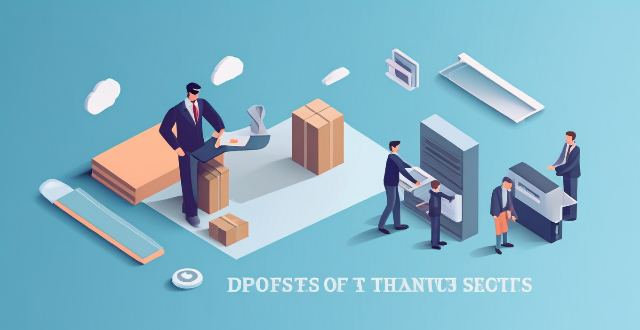
Can I return or exchange items purchased through团购优惠 (tuan gou youhui) ?
This text discusses the concept of Tuan Gou Youhui, a popular online shopping method in China that allows customers to purchase products at discounted rates in large group sizes. It then explores the return and exchange policies for items purchased through this method, noting that these policies vary depending on the specific merchant and product but most merchants offer some form of return or exchange policy. The text provides general guidelines for understanding return and exchange policies and steps to return or exchange an item, emphasizing the importance of contacting customer service, providing necessary information, packaging the product carefully, shipping it according to instructions, waiting for refund or exchange, and confirming receipt of refund or exchanged product. Finally, it concludes that by understanding these policies and following appropriate steps, customers can ensure a smooth and hassle-free experience when shopping through Tuan Gou Youhui.

What is the difference between an iPhone gray market and an official one ?
The text describes the key differences between an iPhone gray market and an official one. The main points are: 1. Authorization: Gray market devices are not authorized by Apple, while official market devices are sold through authorized retailers and carriers. 2. Warranty: Gray market devices may not come with a warranty or have limited warranty, while official market devices come with a warranty and support from Apple. 3. Price: Gray market devices may be cheaper due to lack of authorization and warranty, but customers should be cautious of potential scams and frauds. Official market prices are set by Apple and customers can take advantage of trade-in programs and financing options. 4. Accessories and Packaging: Gray market devices may come without original packaging, accessories, or documentation, while official market devices come with original packaging, accessories, and documentation. 5. Software and Updates: Gray market devices may not receive timely software updates or support from Apple, while official market devices receive regular software updates and support from Apple. 6. Resale Value: Gray market devices may have a lower resale value due to lack of warranty and potential issues with authenticity, while official market devices retain their value better due to warranty and support from Apple.

What is the process of returning a product in global shopping ?
### Summary: Returning a product purchased through global shopping involves several steps, including checking the return policy, initiating the return process, preparing and shipping the item back, monitoring your refund, documenting the process, and considering international factors such as customs and currency exchange rates. It's important to stay organized, use trackable shipping methods, and keep records of all communications with the seller to ensure a smooth and effective return.

How do I know if a luxury item is worth the price tag ?
When it comes to purchasing a luxury item, it is important to consider several factors before making a decision. Here are some tips on how to determine if a luxury item is worth the price tag: ## 1\. Research the brand and product - **Brand reputation**: Look into the brand's history, heritage, and reputation for quality craftsmanship. - **Product quality**: Examine the materials used, construction, and overall design of the item. - **Comparison shopping**: Compare similar items from other luxury brands to see if the price is justified. ## 2\. Consider your personal needs and preferences - **Functionality**: Will the item serve a practical purpose in your life, or is it purely for aesthetic purposes? - **Personal style**: Does the item align with your personal style and taste? - **Usage frequency**: Will you use the item frequently enough to justify the cost? ## 3\. Evaluate resale value - **Popularity**: Is the item popular among collectors or enthusiasts? - **Condition**: Is the item well-maintained and in good condition? - **Market demand**: Is there a high demand for this type of luxury item? ## 4\. Seek professional advice - **Expert opinions**: Consult with experts in the field, such as luxury goods appraisers or collectors. - **Online forums**: Join online communities dedicated to luxury goods and seek advice from fellow enthusiasts. - **Sales associates**: Ask sales associates at luxury stores for their recommendations and insights. ## 5\. Trust your instincts - **Emotional connection**: Do you feel a strong emotional connection to the item? - **Guilt-free spending**: Can you afford the purchase without feeling guilty or stressed about the cost? - **Long-term satisfaction**: Will owning this item bring you long-term satisfaction and happiness? In conclusion, determining whether a luxury item is worth the price tag requires careful consideration of various factors, including brand reputation, product quality, personal needs and preferences, resale value, professional advice, and trusting your instincts. By taking these factors into account, you can make an informed decision about whether a luxury item is truly worth its price tag.

What are the pros and cons of owning a diesel hybrid vehicle ?
Diesel hybrid vehicles offer several advantages, including improved fuel economy and lower emissions. They also provide better performance and a quieter ride. However, they come with higher costs and complex technology that may require specialized maintenance. Additionally, limited charging infrastructure and potential weight issues can affect their efficiency and handling. The resale value of diesel hybrids might not be as high due to the specialized nature of the technology. Despite these drawbacks, diesel hybrids offer a reduced dependence on fossil fuels and can be a more environmentally friendly option for transportation.
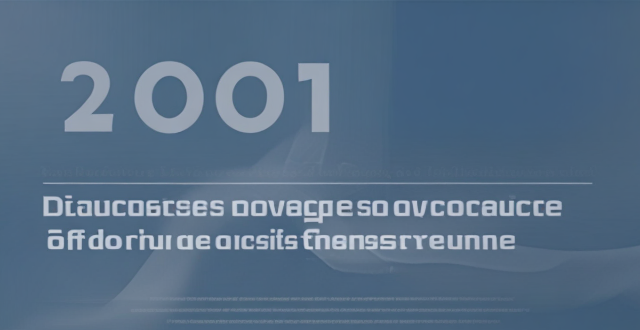
What are the pros and cons of buying a second-hand iPhone ?
The text discusses the pros and cons of buying a second-hand iPhone. The advantages include cost savings, environmental friendliness, high resale value, and a wide range of options. However, there are also potential risks such as hidden issues, lack of warranty, outdated technology, and concerns about battery life. Ultimately, the decision to buy a second-hand iPhone depends on individual preferences and priorities.

What are the economic benefits of implementing eco-friendly practices in construction projects ?
Eco-friendly practices in construction projects offer economic benefits such as cost savings, increased property value, improved health and productivity, and risk mitigation. Incorporating energy-efficient designs and materials can reduce utility costs, while the use of durable materials can lower maintenance costs. Tax incentives and grants can offset initial costs, making sustainable practices more affordable. Eco-friendly buildings often have higher resale values and attract tenants and buyers who prioritize sustainability. A healthier indoor environment can reduce absenteeism and healthcare costs for businesses and improve quality of life for residents. Implementing eco-friendly practices can help builders stay compliant with evolving regulations and create resilient buildings that are less vulnerable to climate change impacts.

How much does it cost to go to an idol concert ?
Attending an idol concert can be costly due to various factors such as ticket prices, travel expenses, merchandise costs, and additional fees. To manage these expenses, it's recommended to set a budget, compare prices, take advantage of group discounts, bring your own snacks, and consider the resale market for tickets.